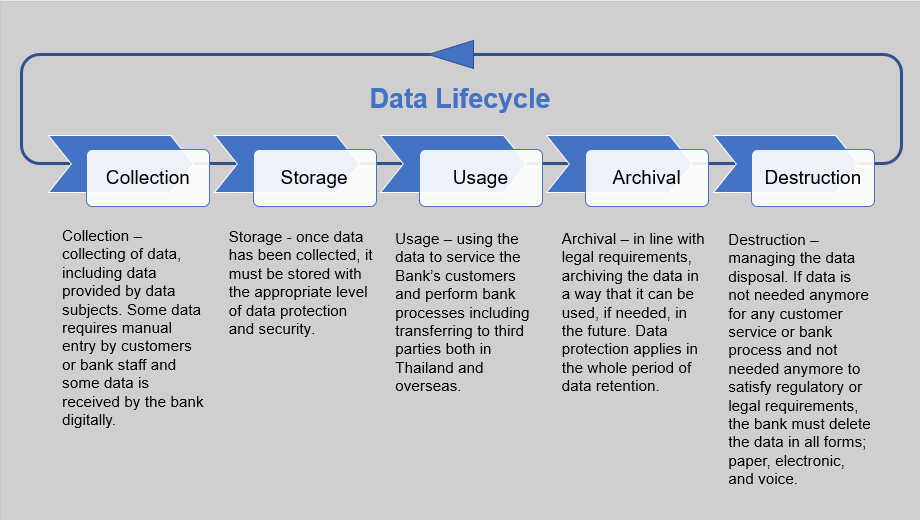The Effect of Effective Data Destruction on Cyber Security Threat Management
The Effect of Effective Data Destruction on Cyber Security Threat Management
Blog Article
Exploring the Importance of Information Damage in the Context of Computer Safety And Security Solutions and Protecting Confidential Information
In a period where data breaches are progressively typical, the value of effective information destruction can not be overstated. What approaches can organizations execute to enhance their information devastation protocols?
Recognizing Information Devastation
Data devastation is a critical element of computer system protection that involves the long-term elimination of data from storage tools to stop unauthorized accessibility and prospective data violations. In an increasingly digital landscape, companies face enhanced risks connected with sensitive details being poorly accessed or exploited. Efficient data destruction safeguards versus these hazards, making sure that private dataâEUR" such as customer info, intellectual building, and financial recordsâEUR" can not be recovered after disposal.
Understanding the relevance of data damage prolongs beyond simple conformity with regulative and lawful structures; it is essential for maintaining organizational honesty and trust. When information is poorly managed or inadequately destroyed, the consequences can be severe, including monetary loss, reputational damages, and legal liabilities.

Techniques of Data Obliteration

One prevalent method is data wiping, which entails overwriting existing data with arbitrary patterns several times. This strategy provides the initial information irretrievable, making it a popular selection for companies looking for to protect secret information.
One more approach is degaussing, which makes use of a powerful magnetic field to interfere with the magnetic domains on storage space gadgets, efficiently erasing the data. This approach is specifically reliable for magnetic media however is not appropriate to solid-state drives.
Physical destruction is one more durable technique, involving the shredding or crushing of storage space tools. This approach warranties that data healing is practically difficult, making it ideal for very sensitive information.
Lastly, security can act as a complementary technique to information elimination. By securing data prior to removal, organizations can include an extra layer of security, making certain that even if residues are recuperated, they remain unattainable without the decryption key. Each approach ought to be chosen based on the level of information sensitivity and the specific safety requirements of the organization.
Legal Conformity and Information Safety
Organizations need to navigate a complicated landscape of lawful requirements associated with data protection, especially after implementing techniques of information elimination. Various regulations, such as the General Data Defense Guideline (GDPR) and the Medical Insurance Transportability and Liability Act (HIPAA), impose strict standards on how organizations should dispose and take care of of sensitive information. Failing to abide by these policies can lead to considerable legal repercussions, consisting of considerable penalties next page and reputational damage.
Information devastation processes should Check Out Your URL be diligently recorded to show compliance with applicable laws and criteria. This documentation not only works as proof of adherence to lawful commitments however also shows a commitment to guarding sensitive information. Organizations should additionally develop clear plans relating to data retention and devastation timelines, guaranteeing that data is not held longer than needed.

Furthermore, routine audits and evaluations of information destruction practices are important to maintain conformity and adjust to evolving legal frameworks (data destruction). By proactively addressing legal needs, organizations can mitigate risks linked with data breaches and demonstrate their dedication to information safety and security. Eventually, focusing on lawful compliance in information damage processes is not simply a regulatory responsibility, but an essential facet of a robust information protection strategy
Impact on Company Reputation
The reputation of an organization can be significantly influenced by its strategy to information damage and management. In today's electronic landscape, where information breaches can take place anytime, the failure to appropriately throw away sensitive info can bring about serious effects. Organizations that inadequately handle information devastation risk subjecting personal customer details, which not only goes against personal privacy regulations but likewise wears down depend on amongst stakeholders and clients.
A tarnished reputation can lead to reduced consumer commitment, as customers become hesitant to engage with a company that has demonstrated negligence in securing their information. Adverse attention surrounding a data breach can have an enduring effect, as prospective clients may be discouraged by the regarded lack of safety. This can cause a direct decline in income and market share.
Furthermore, businesses that prioritize information devastation as component of their safety and security method can improve their track record by showcasing their commitment to guarding sensitive information. By taking on rigid information monitoring methods, organizations can not just minimize risks however additionally position themselves as reliable entities in their corresponding sectors, consequently enhancing their general brand photo.

Best Practices for Secure Disposal
Applying finest techniques for safe disposal of data is essential for reducing dangers linked with information breaches and making sure conformity with privacy regulations. Organizations should embrace a comprehensive information disposal policy that details procedures for both digital and physical information destruction.
For physical information storage space tools, such try this website as disk drives, shredding or degaussing is suggested to stop information healing. Additionally, companies must maintain a chain of custody documents during the disposal process, making certain liability and traceability of disposed products.
For electronic information, utilizing software application that complies with industry standards for information wiping is essential. This software application ought to overwrite existing information multiple times, making recovery basically impossible. It is also essential to verify the efficiency of the data devastation procedure through audits or third-party analyses.
Training staff members on safe and secure disposal techniques includes an additional layer of security, as human mistake can usually bring about information direct exposure. On a regular basis examining and upgrading disposal policies ensures alignment with advancing guidelines and technological advancements. By executing these finest techniques, companies can dramatically lower the risk of unauthorized data accessibility and enhance their overall data defense strategy.
Conclusion
To conclude, information destruction is a fundamental facet of computer system security services that ensures the security of confidential info from unauthorized access. Executing efficient approaches of information obliteration, adhering to lawful compliance, and identifying the effect on organization track record are necessary parts of a detailed data security approach. By embracing ideal techniques for secure disposal, companies can cultivate count on with customers and guard delicate data, ultimately contributing to an extra protected electronic landscape.
In an era where information breaches are significantly common, the relevance of efficient information devastation can not be overemphasized.Information damage is a vital element of computer system security that involves the irreversible removal of information from storage space gadgets to avoid unauthorized access and prospective information breaches. Organizations ought to additionally establish clear plans regarding information retention and damage timelines, making sure that data is not held longer than needed.
By proactively attending to lawful needs, organizations can minimize risks associated with information breaches and show their dedication to data protection (data destruction). Ultimately, focusing on legal compliance in information destruction procedures is not simply a governing responsibility, yet an essential element of a durable information safety and security approach
Report this page